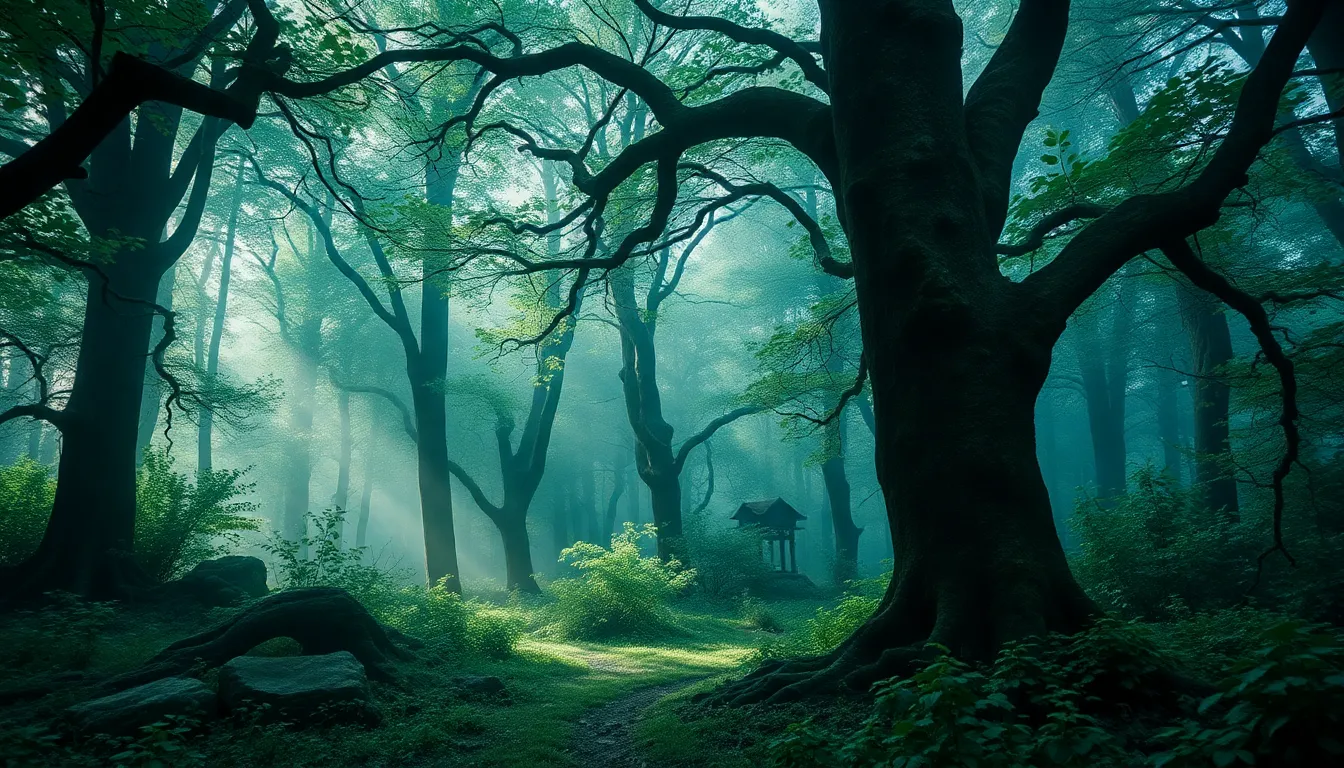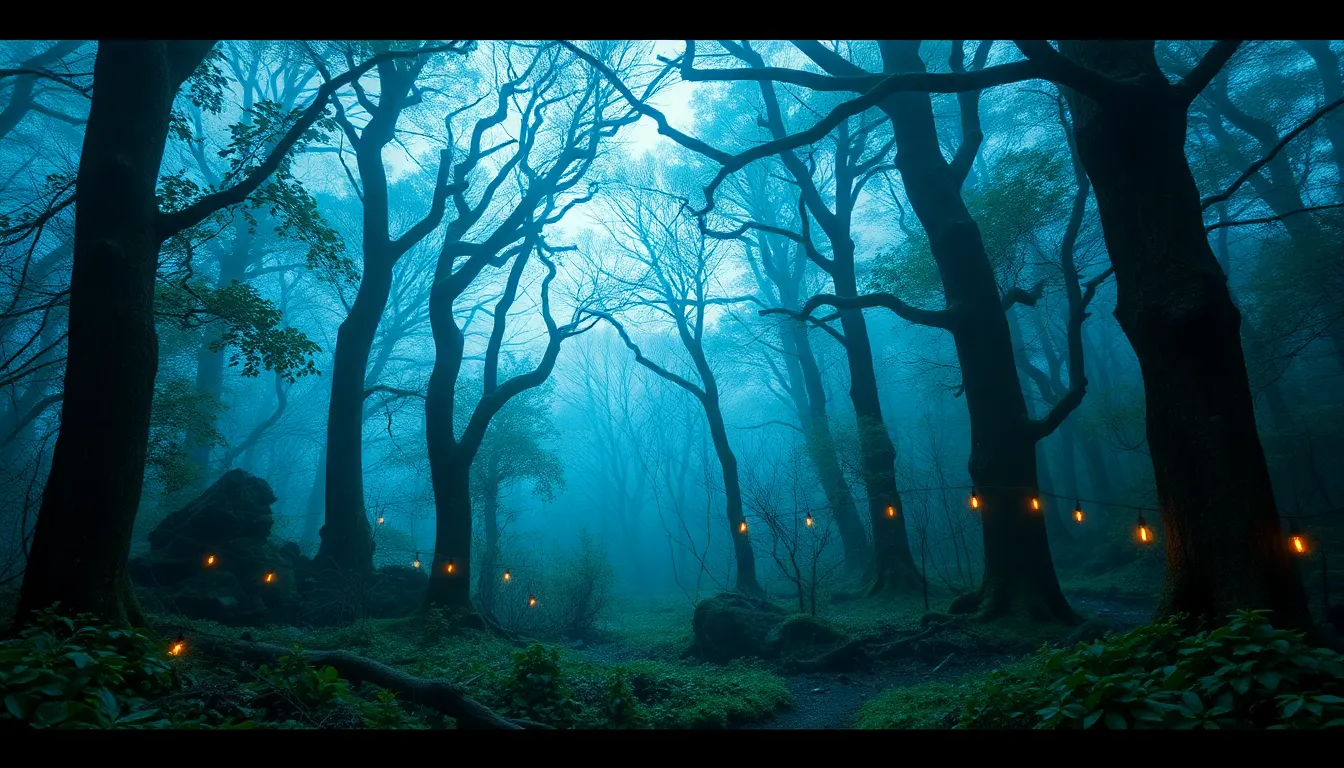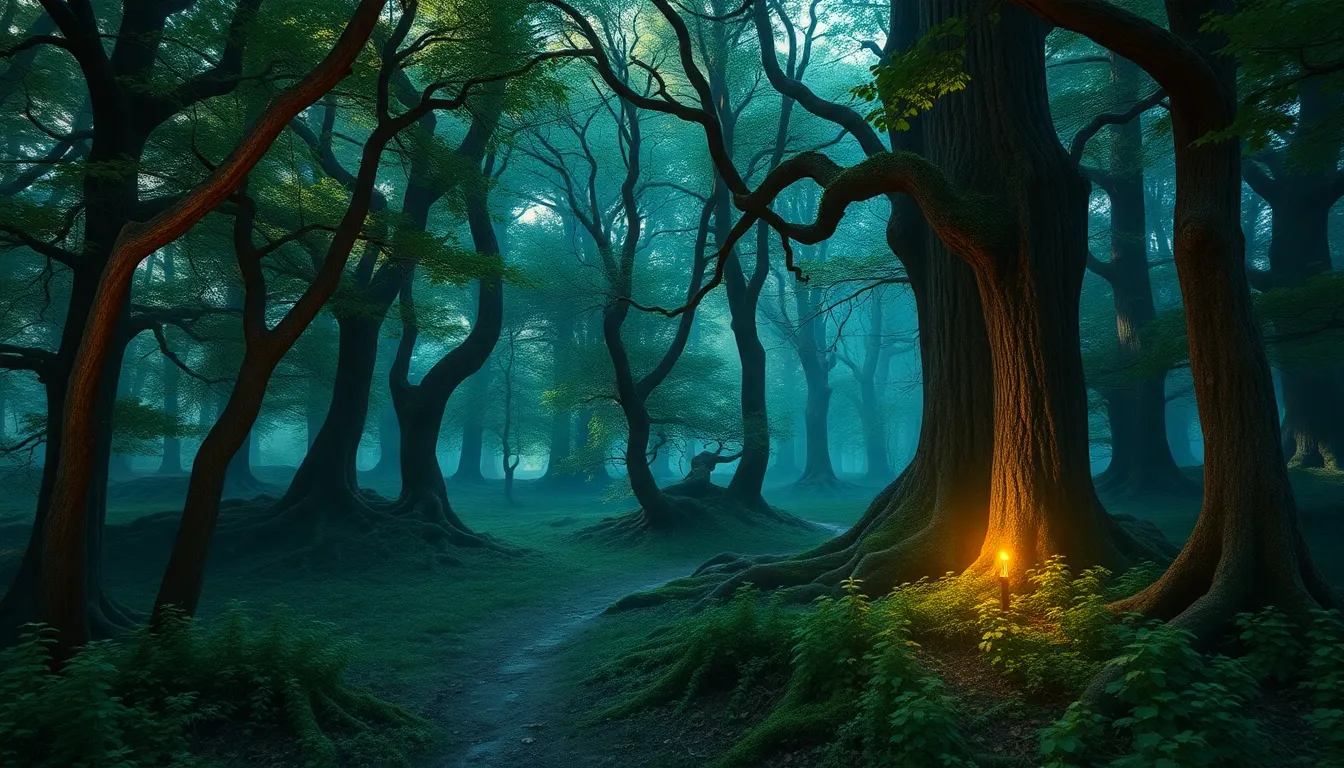Are Enchanted Forests Real? Unraveling the Myths and Legends
Introduction to Enchanted Forests
Enchanted forests have long captured the imagination of people around the world. These mystical woodlands are often depicted as places filled with magical creatures, hidden secrets, and transformative experiences. Characteristically, enchanted forests are lush, verdant spaces that seem to pulsate with a life of their own, often shrouded in mist or illuminated by otherworldly light. Their presence is prevalent in folklore, fairy tales, and popular culture, where they serve as settings for adventures, trials, and revelations.
Historical Context of Enchanted Forests
Throughout history, ancient civilizations have infused forests with mystical significance. In many cultures, these wooded areas were seen as gateways to the spiritual realm, inhabited by gods, spirits, and otherworldly beings. For example:
- The Celts revered forests as sacred spaces, believing they were inhabited by fairies and other supernatural beings.
- In Norse mythology, Yggdrasil, the World Tree, connects the nine realms, illustrating the spiritual importance of trees and forests.
- In many indigenous cultures, forests are seen as living entities deserving of respect and protection.
The role of forests in mythology is vast, serving as symbols of life, death, and rebirth across different cultures, reflecting humanity’s deep connection to nature.
Famous Enchanted Forests in Myth and Literature
Enchanted forests have a significant presence in fairy tales and classic literature. Notable examples include:
- Forest of Enchantment in “Sleeping Beauty”: A place where time stands still, filled with magical creatures and hidden dangers.
- Forest of Arden in “As You Like It”: A place of refuge and transformation, where characters find love and discover their true selves.
- Shakespeare’s “A Midsummer Night’s Dream”: A forest that serves as a backdrop for romance, mischief, and the supernatural.
These literary representations highlight the duality of enchanted forests as places of wonder and danger, embodying both the beauty and chaos of nature.
The Science Behind Forests and Their Mystique
While enchanted forests are often steeped in myth, scientific explanations for their allure exist. Various ecological features contribute to their mystical reputation:
- Biodiversity: Rich ecosystems with diverse flora and fauna can create a sense of wonder and mystery.
- Unique Landscapes: Natural formations such as twisting trees, hidden groves, and flowing streams enhance the enchanting experience.
- Soundscapes: The sounds of rustling leaves, chirping birds, and flowing water can evoke feelings of tranquility and magic.
These ecological aspects can create an atmosphere that feels otherworldly, reinforcing the enchantment associated with these spaces.
The Psychology of Enchantment: Why Do We Believe?
Humans have a natural fascination with magical places. Psychological explanations for our attraction to enchanted forests include:
- Symbolism of Growth: Forests represent growth, change, and the unknown, resonating with our innate desire for exploration.
- Childhood Imagination: Many of us are introduced to the concept of enchanted forests through childhood stories, sparking a lifelong intrigue.
- Escapism: In a fast-paced world, enchanted forests offer a retreat from reality, allowing us to explore themes of wonder and possibility.
These psychological factors contribute to the enduring belief in the magic of forests, blending the lines between reality and fantasy.
Modern Interpretations and Representations of Enchanted Forests
In contemporary culture, enchanted forests continue to thrive in films, video games, and other media. Notable examples include:
- Disney’s “Into the Woods”: A musical that intertwines various fairy tales, showcasing the enchantment and danger of the forest.
- “The Legend of Zelda: Breath of the Wild”: A video game that features vast, magical forests filled with mysteries and challenges for players to explore.
Modern media reshapes our understanding of enchanted forests, often blending traditional folklore with new narratives, ensuring their relevance in today’s storytelling.
Real-Life Locations That Inspire the Idea of Enchantment
Several actual forests evoke a sense of magic and wonder, inspiring tales of enchantment:
- The Black Forest, Germany: Known for its dense trees and misty landscapes, it has inspired many fairy tales.
- Aokigahara, Japan: Also known as the Sea of Trees, this forest possesses a haunting beauty, often associated with folklore and mystery.
The unique environmental factors of these locations, such as fog, flora, and fauna, contribute to their enchanting reputation, making them real-life counterparts to the mythical enchanted forests of our imagination.
The Role of Enchanted Forests in Eco-Tourism
Enchanted forests also play a significant role in eco-tourism initiatives. The concept of enchanted forests attracts tourists seeking unique experiences in nature. Examples include:
- Eco-tours in the Black Forest: Offering guided hikes that explore the folklore and natural beauty of the region.
- Magical forest retreats: Destinations that focus on wellness and nature, allowing visitors to immerse themselves in the enchanting environment.
These initiatives not only promote sustainable tourism but also help preserve the cultural stories tied to these magical places.
Cultural Significance and Preservation of Enchanted Forests
The folklore surrounding enchanted forests plays a crucial role in preserving natural landscapes. Cultural initiatives aim to celebrate and protect these areas through various means:
- Folklore Festivals: Events celebrating local myths and stories that highlight the significance of forests in cultural heritage.
- Conservation Efforts: Organizations working to protect natural habitats while promoting the stories that enrich these landscapes.
Such efforts ensure that enchanted forests remain a vital part of our cultural identity and natural heritage.
Conclusion: The Intersection of Myth and Nature
Enchanted forests embody the enduring allure of myth and nature, weaving together stories that transcend time and culture. They remind us of our deep connection to the natural world while inviting us to explore the boundaries of imagination and reality. As we appreciate the beauty of these magical places, we also recognize the importance of preserving the stories and landscapes that inspire them. The intersection of myth and nature continues to enrich our lives, ensuring that the spirit of enchanted forests will endure for generations to come.



